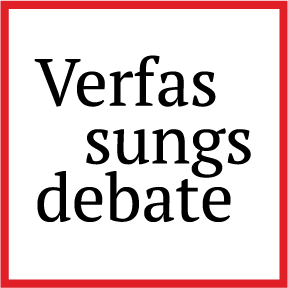Resisting Fascisation
Peru’s Constitutional Struggle against Lawlessness
Six months before presidential and parliamentary elections, the country finds itself in open constitutional crisis: On October 10, Congress impeached President Dina Boluarte for “permanent moral incapacity”, and swiftly installed José Jerí as interim president – a politician that has faced criminal accusations of corruption, disobedience to authority, and rape. Within days, tens of thousands took to the streets, calling for the departure of the entire political class. Under the slogan, “They all must go!”, protesters demanded significant political change.
The initially peaceful protests soon turned violent after police clashed with demonstrators. Opposition lawmakers proposed a motion of censure against Jerí and the Presiding Board of Congress, but the right-wing majority blocked it. Jerí, who is apparently seeking to emulate Nayib Bukele’s public image, declared a 30-day state of emergency in Lima. Still, protests continued, and another national strike has been called for November 14.
What is playing out is much more than a power struggle between institutions. In fact, the streets and courts have become two arenas of resistance not only against authoritarianism, but also lawlessness. This confrontation, I argue, marks a crucial constitutional struggle against a growing tendency toward fascisation in Peru.
Unraveling the crisis
The recent decision to impeach Boluarte – whose approval rating had dropped to 3% – contrasts with the seven impeachment motions that, since 2022, were rejected by the right-wing majority in Congress – an institution with 4% approval rate itself. However, after several strikes by transport workers and mobilizations by so-called Gen Z protesters, two events became key triggers for the impeachment: the public repudiation of a far-right presidential candidate in the southern city of Puno, a bad omen for the upcoming electoral campaigns, and a concert shooting targeting the iconic cumbia band Agua Marina, which epitomized the growing wave of extortion and murder linked to organized crime. The impeachment thus appears as an act of political opportunism at the expense of a country that – as I have argued elsewhere – is already mired in crisis.
The national strike on October 15 was met with severe police repression. In Lima, a young artist, Trvko, was shot dead by a plainclothes police officer; another, Flipown, fell into a coma due to severe head trauma. Many civilians sustained pellet gun wounds, and an 11-years-old child was gravely injured by a tear gas canister fired to the chest. As already mentioned, Jerí was shielded from a motion of censure by the predominantly right-wing majority in Congress, often described as a “mafia pact” that wields power over the country. Indeed, one of the main demands driving the protests was repealing a set of laws enacted by this parliamentary alliance – laws which, among other things, hinder the prosecution of criminal organizations, prevent NGOs from offering legal support to victims of state violence, and grant amnesty to state actors who committed crimes during Peru’s internal armed conflict between 1980 and 2000. These laws were passed as Congress continued to impose itself upon the Public Ministry, the judiciary and the institutions overseeing electoral processes.
In a global context marked by the rise of the far right, Peru’s political crisis cannot be properly understood as an isolated national phenomenon. In this light, the popular chant “This democracy is no longer a democracy” captures not only Peru’s regression toward a so-called hybrid regime – reminiscent of the 1990’s neoliberal dictatorship – but also hints at the growing fascist tendencies within Peruvian politics and society. To avoid misunderstandings, a conceptual clarification is required.
Is this late fascism?
One of the most significant contributions of Alberto Toscano’s recent book, Late Fascism, is his proposal to conceptualize fascism not as a state but as a “process” (p. x). In a nutshell, Toscano warns against relying too heavily on historical analogies with the European interwar period to grasp fascism today. For fascism is not a state of affairs that arises only when a series of extraordinary features are present, e.g. ethnonationalist mass movements under a charismatic leader, a police state deploying racial terror, expansionist war policies, and so on. Instead, Toscano argues that it is more useful to look at fascism as a continuous process of “fascisation” inherently entangled with the racialized structure of liberal democracies (p. 155).
This can be illustrated on two fronts. On the one hand, fascist ideologies, practices and institutions cannot be properly understood without considering the longue durée history of colonialism and chattel slavery (p. 28). Aimé Césaire famously characterized fascism as a recoil or backlash of European regimes predicated on the dispossession, enslavement and extermination of colonial subjects. Indeed, concentration camps in Germany were preceded by those in Namibia, and Hitler was inspired by the U.S. Indian reservation system.
On the other hand, people of color within liberal democracies have been systematically subjected to racial policies of displacement, incarceration, and police violence that, from the perspective of the victims, are hardly distinguishable from “proper” fascism. The U.S. prison-industrial complex is a case in point, but one might also think of “internal colonialism” in Latin America, i.e. a structurally asymmetric social order based on the superexploitation, marginalization, and oppression of racialized populations. From this vantage point, fascisation is not a radical break with the normal functioning of liberal democracies but rather a gradual process whereby state violence is generalized through its redirection from the peripheries to the center. One must ask: Are the escalating outbursts of police violence in Lima, mostly targeting racialized subjects, a sign of fascisation?
Two additional factors are worth considering. First, according to Toscano, a crucial driver that accentuates fascist tendencies in society and justifies the deployment of state violence is the recurring threat of an enemy, typically associated with the political left. Think of the specter of communism, immigration, or gender ideology. In Peru, predominantly right-wing politicians and public figures conjure this enemy as the Shining Path terrorist, the Venezuelan criminal, or the “caviar mafia”. Second, and perhaps more revealing, against the misguided stereotype of fascism as a totalitarian dictatorship, Toscano notes that fascist regimes are defined instead by a strategic distribution of the recourse to violence. Much like a “phantasmagoric synthesis of the settler and the soldier (or the cop)”, fascists hold the prerogative to act as petty sovereigns toward racialized populations (p. 157). Think of Germany’s paramilitary Schutzstaffel, U.S. Immigration and Customs Enforcement agents, or police and military officers during Peru’s armed conflict. As already mentioned, Congress enacted earlier this year an amnesty law for state officers who, for instance, tortured, raped or executed innocent civilians between 1980 and 2000. Now, Fernando Rospigliosi – the current President of Congress and member of the right-wing party Fuerza Popular – has called the young artist shot dead by a plainclothes police officer a “terrorist” and announced that he will propose a law of impunity for police and military officers who injure or even kill citizens exercising their constitutional right to protest. One must ask: Is this late fascism?
The role of law
Yet there is a caveat to Toscano’s approach: Even if one agrees that it is productive to understand fascism as a process that gradually spreads from the inner or outer peripheries of liberal democracies, it is undeniable that there remain institutional differences between these two political regimes. One difference stands out in particular: the role of law. In his Behemoth, Franz Neumann famously described National Socialism as “a form of society in which the ruling groups control the rest of the population directly, without the mediation of that rational though coercive apparatus hitherto known as the state” (1966, p. 470). In other words, National Socialism was less an authoritarian state than a “non-state” or, more precisely, “a rule of lawlessness” (p. xii).
To support this claim, Neumann highlights the role of law as an institution integral to statehood. In his view, the rationality of law lies in its general character, which enables the legal order to act as a mediating buffer against political decisions enforced by the state’s coercive powers. According to the liberal tradition, the so-called “negative virtue” of the rule of law consists in hindering an arbitrary and potentially despotic “rule of men”. Neumann contends that fascism is marked by a tendency to suppress the law’s general character – and with it, the rule of law itself. Consequently, the legal order degenerates into a mere collection of technical rules without binding force. Lacking a unifying constitution that functions as a system of checks and balances, fascism amounts to a rule of lawlessness and therefore to a non-state. Fascisation, then, is a process through which law loses its buffering role against politics. My argument is that such a tendency toward lawlessness is evident in Peru’s unfolding crisis.
A rule of lawlessness
Since 2023, Congress has substantially modified the Constitución Política del Perú to serve its own interests, thereby jeopardizing the separation of powers and the rule of law. In fact, Peru has witnessed not only a parliamentary cooptation of the Executive and the Judiciary but also of autonomous institutions such as the Constitutional Court, the National Board of Justice and the Public Ministry – institutions meant to regulate and balance the exercise of power.
In the midst of an enduring struggle with Congress, which is considering a constitutional reform to deactivate and replace it, the National Board of Justice recently suspended Delia Espinoza as Attorney General of Peru and head of the Public Ministry for six months. This decision followed Espinoza’s refusal to reinstate Patricia Benavides as Attorney General. In 2024, Benavides was removed from office and suspended for abuse of authority and corruption. She was suspended again in 2025 for shielding the judicial criminal network Los Cuellos Blancos del Puerto.
However, after Congress dismissed the accusation against Benavides, the Judiciary restituted her as Supreme Prosecutor. Tomás Aladino Gálvez, the current interim Attorney General, had been removed from office in 2021 because of his alleged involvement in the very same criminal network. Yet he too was reinstated as Supreme Prosecutor in 2025 by a resolution of the Constitutional Court, whose members are appointed by Congress. Gálvez was first appointed Supreme Prosecutor for Family Affairs in August, and his first act was to drop the criminal investigation against current president José Jerí on rape charges.
Most recently, the Constitutional Court has also ruled to dismiss an ongoing case of money laundering against Keiko Fujimori, the daughter of former dictator Alberto Fujimori and current presidential candidate for Fuerza Popular. In a move contradicting the law’s general character, the Court declared that this habeas corpus ruling does not constitute a binding precedent for similar cases involving left-wing politicians such as Susana Villarán or Ollanta Humala. Meanwhile, laws passed by Congress continue to foster impunity by undermining the powers of judges and prosecutors. Referring to Law No. 32130, for instance, the Peruvian National Police has requested to take over the investigation of the officer who killed young artist Trvko during the national strike, removing it from the jurisdiction of the Public Ministry.
Against this background, it does not seem far-fetched to speak of a growing rule of impunity in Peru – an unsettling sign of lawlessness.
Toward a constitutional struggle
Deeming the previously mentioned amnesty law for state criminals unconstitutional, two judges so far have exercised diffuse judicial review and refused to apply it. In a similar vein, prosecutor José Domingo Pérez sought to dissuade judge Wilson Verástegui from dismissing the ongoing case against Keiko Fujimori. Verástegui, however, decided to step down after a report suggested a potential conflict of interest. The appointment of a new judge is still pending. Finally, the Ninth Constitutional Court of Lima upheld an injunction filed by Delia Espinoza to reinstate her as Attorney General. Nevertheless, the National Board of Justice decided to ignore this ruling and confirmed Espinoza’s suspension. These three cases illustrate the ongoing struggle of judiciary institutions against Peru’s mounting lawlessness and fascisation.
This, I argue, is essentially a constitutional struggle – an effort to preserve what remains of a system of checks and balances that constitutionalizes the exercise of state power. Given Congress’ close ties to oligopolistic and criminalinterests that threaten Peru’s macroeconomic stability, this is indeed a crucial task. For nothing less than the preservation, renewal, or further disintegration of Peru’s political constitution appears to be at stake. It is therefore vital to remember that effective resistance against fascisation stands no chance if it is confined merely to the courtroom. Referring to the citizens who defended Madrid from fascism during the Spanish Civil War, Antonio Machado famously observed that only the people can save the people. Despite the state of emergency in Lima, a nationwide strike has been called for November 14. Our struggle continues.



